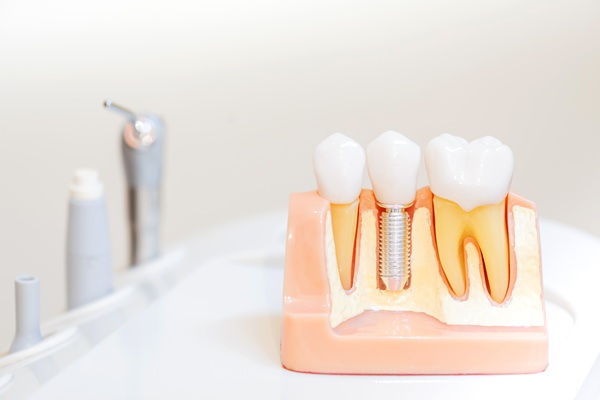Bone Grafting for When Your Jawbone Is Too Thin or Soft for Dental Implants

Even if a patient’s jawbone has deteriorated or is too soft to hold the post needed to secure a dental implant, implants may still be possible. Dental bone grafting can restore the jawbone to a state in which it can be primed for a dental implant. Learn more about this procedure to discover when and why patients may need it.
What are dental bone grafts?
Bone grafts in any part of the body are usually portions of bone that have been taken from one part of the body and grafted, or fused onto, another bone in a different location. If the patient’s bones are too weak, brittle, or thin even for a graft to occur, synthetic material may be used to mimic natural bone. Dental bone grafts can be sourced in the following ways:
- Autografts: This type of graft is taken from another part of the patient's body. It is most often sourced from a large bone, like the hip or femur, and it is preferable to all other types of grafts if it is available.
- Allografts: Another person, or a cadaver, may supply bone for this type of graft.
- Alloplasts: These grafts are composed of synthetic bone material such as calcium phosphate.
- Xenografts: These grafts are sourced from an animal like a cow or a pig.
Who may need a dental bone graft?
Otherwise healthy individuals who have missing teeth may be good candidates for dental bone grafts. Sometimes, especially in the case of gum disease, a patient needs a new tooth but, due to the disease, the jawbone has lost bone mass either in sections or as a whole. A soft jawbone is unable to hold the posts for implants, so patients in this position need to undergo a graft to provide a solid foundation for implanting a replacement tooth.
How is a dental bone graft completed?
During the bone grafting appointment, a portion of bone is taken from another area of the patient’s body (if the procedure involves an autograft) or it will be waiting for the patient in the dentist’s office. An incision is made in the gum line to place the new portion of the bone or synthetic bone. After placement, the patient’s gum is stitched up, and the mouth begins the healing process as the surrounding bone grows around the graft. The patient receives instructions for post-graft care and healing, which can take several months. Eventually, the jawbone is ready for the dental implant procedure.
Conclusion
The time and cost to complete a bone grafting, in the end, is well worth it. With implants, the patient is able to enjoy a boost in oral health, stronger teeth, and a renewed confidence in the resulting new smile. Patients who need implants but have been denied due to a soft jawbone or other issues should consult with a licensed dentist today to determine whether a dental bone graft is an appropriate solution.
Are you considering bone grafting in the Lee's Summit area? Get more information at https://spectrumsurgical.net.
Check out what others are saying about our services on Yelp: Read our Yelp reviews.
Recent Posts
Dental implants represent a durable and aesthetically pleasing solution for replacing missing teeth. Understanding the proper care for dental implants remains essential to ensure longevity and optimal function. Adhering to recommended practices significantly reduces the risk of complications, preserves oral health, and maintains the attractive appearance and comfort associated with implants. By implementing consistent maintenance…
The jawbone is the part of the face that holds many essential elements together, such as the teeth, ligaments, and muscles; however, bone grafting may sometimes be necessary if the jawbone is too weak to perform these tasks. A person’s jawbone can deteriorate over time, whether due to age, genetics, poor oral health, cancer, or…
Finding lasting relief from issues such as misalignment and facial asymmetry can involve specialized procedures. Fortunately, corrective jaw surgery is a reliable option for addressing these concerns. A dental specialist realigns the upper or lower jaw during this process to promote better function and comfort. Although the procedure can benefit health and appearance significantly, a…
Many individuals seek rhinoplasty to enhance facial harmony, improve nasal function, or correct structural abnormalities. As a surgical procedure that reshapes the nose, rhinoplasty can address aesthetic concerns as well as breathing difficulties caused by structural defects such as a deviated septum. Understanding the consultation process, surgical techniques, and what to expect from the recovery…


